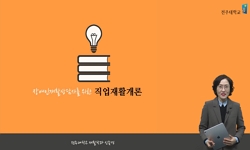<P>Constraint-induced movement therapy (CIMT) is used in stroke rehabilitation to promote recovery of upper limb motor function. However, its efficacy in improving functional outcomes in children with hemiplegic cerebral palsy has not been clear...
http://chineseinput.net/에서 pinyin(병음)방식으로 중국어를 변환할 수 있습니다.
변환된 중국어를 복사하여 사용하시면 됩니다.
- 中文 을 입력하시려면 zhongwen을 입력하시고 space를누르시면됩니다.
- 北京 을 입력하시려면 beijing을 입력하시고 space를 누르시면 됩니다.

Histological and functional assessment of the efficacy of constraint-induced movement therapy in rats following neonatal hypoxic-ischemic brain injury
한글로보기https://www.riss.kr/link?id=A107743837
- 저자
- 발행기관
- 학술지명
- 권호사항
-
발행연도
2017
-
작성언어
-
- 주제어
-
등재정보
SCIE
-
자료형태
학술저널
-
수록면
2775-2782(8쪽)
- 제공처
-
0
상세조회 -
0
다운로드
부가정보
다국어 초록 (Multilingual Abstract)
<P>Constraint-induced movement therapy (CIMT) is used in stroke rehabilitation to promote recovery of upper limb motor function. However, its efficacy in improving functional outcomes in children with hemiplegic cerebral palsy has not been clearly determined in clinical or experimental research. The aim of our study was to assess the efficacy of a new experimental model of CIMT, evaluated in terms of mortality, stress, motor and cognitive function in rats having undergone a neonatal hypoxic-ischemic (HI) brain injury. Neonatal HI injury was induced at post-natal day 7 through unilateral ligation of the common carotid artery followed by exposure to hypoxia for 2 h. CIMT was implemented at 3 weeks, post-HI injury, using a pouch to constrain the unimpaired forelimb and forcing use of the affected forelimb using a motorized treadmill. After HI injury, animals demonstrated motor and cognitive deficits, as well as volumetric decreases in the ipsilateral hemisphere to arterial occlusion. CIMT yielded a modest recovery of motor and cognitive function, with no effect in reducing the size of the HI lesion or post-HI volumetric decreases in brain tissue. Therefore, although animal models of stroke have identified benefits of CIMT, CIMT was not sufficient to enhance brain tissue development and functional outcomes in an animal model of hemiplegic cerebral palsy. Based on our outcomes, we suggest that CIMT can be used as an adjunct treatment to further enhance the efficacy of a program of rehabilitation in children with hemiplegic cerebral palsy.</P>
동일학술지(권/호) 다른 논문
-
- D.A. Spandidos
- Kim, Choong-Gon
- 2017
- SCIE
-
- D.A. Spandidos
- Lee, Sung-Il
- 2017
- SCIE
-
Herbal acupuncture for type 2 diabetes: A meta-analysis
- D.A. Spandidos
- Lee, Seung-Wook
- 2017
- SCIE




 ScienceON
ScienceON






